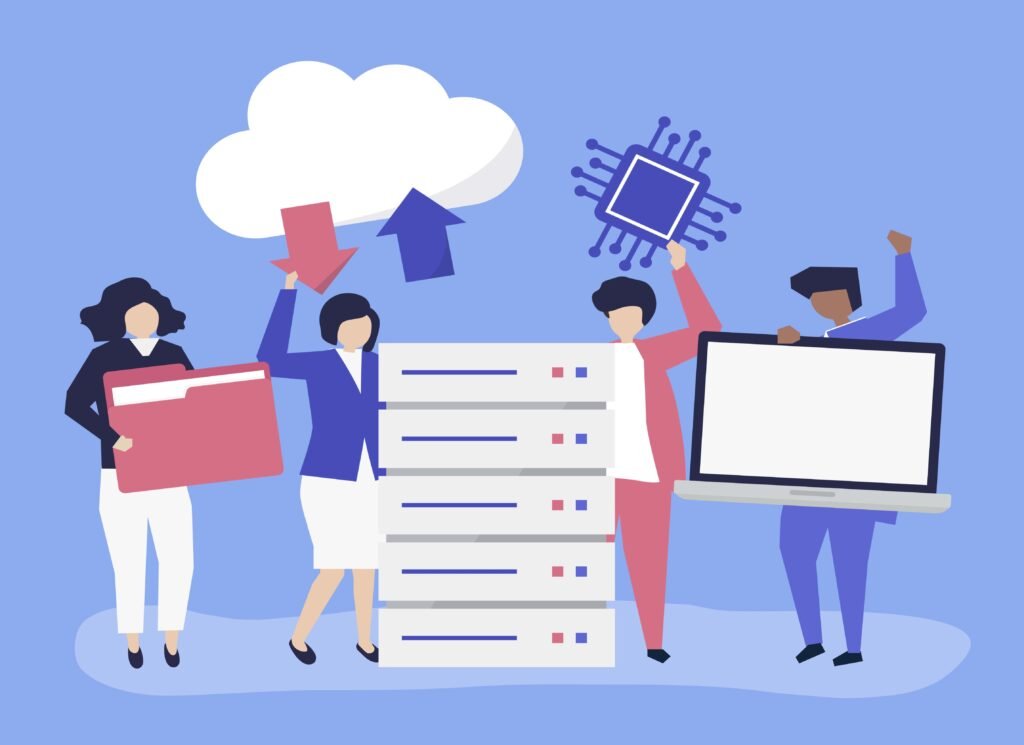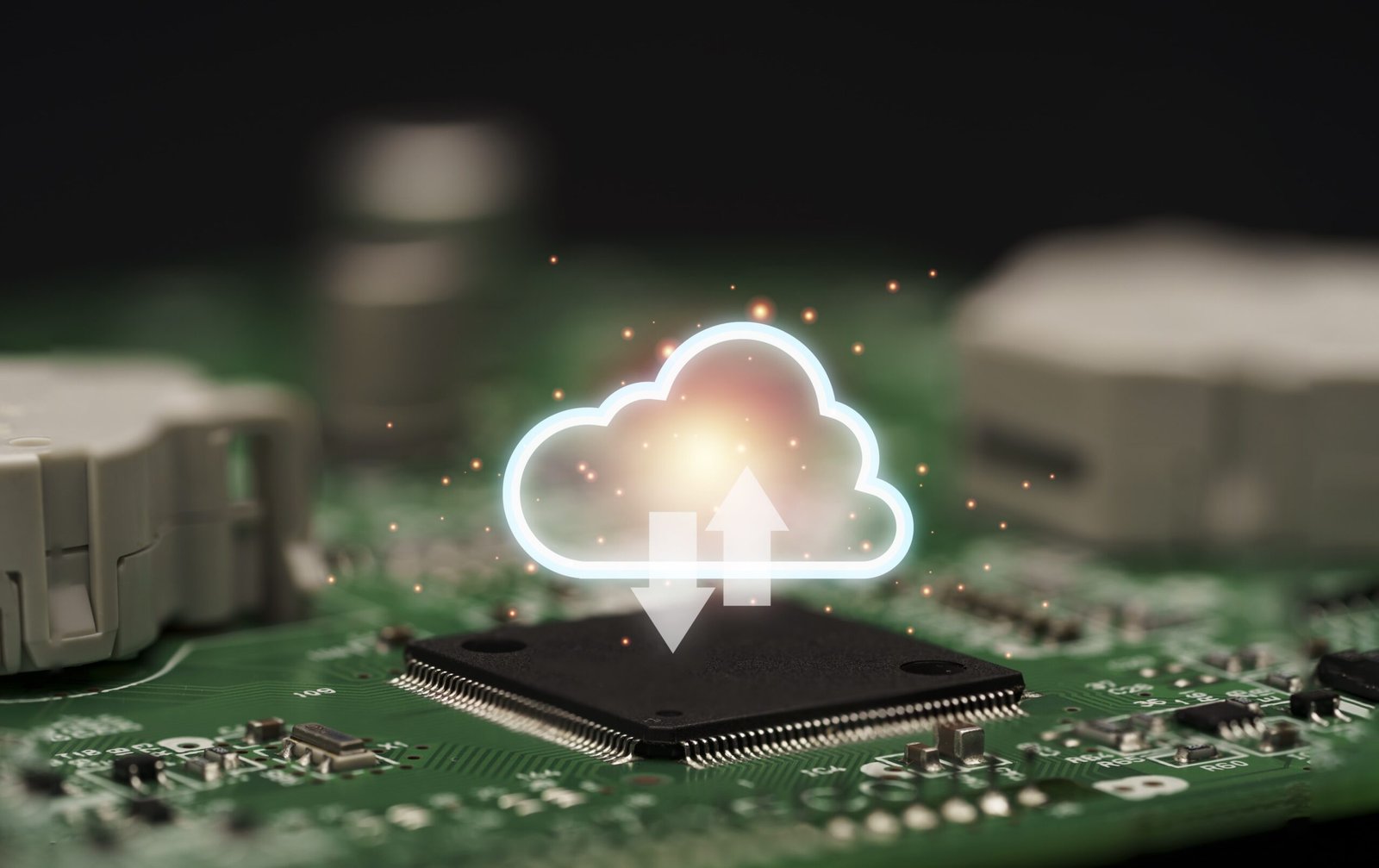Snap to Security- How Cloud Disaster Recovery is Changing the Game?
Imagine, You’re sitting at your desk, thinking it’s just another regular day, and boom! Trouble hits. It could be a hacker messing things up, your computer crashing, or even the weather going wild. Suddenly, all the important data for your work might just disappear. Scary, huh? But wait, there’s a hero in this story and this hero is Cloud Disaster Recovery (CDR). It’s like a superhero for your data, ready to swoop in and save the day, making everything secure again almost like it’s pulling off a magic trick.
The old days of hoping nothing bad happens to your business are over. Cloud Disaster Recovery (CDR) is a game-changer. Thanks to cloud technology, you can quickly get your data, apps, and systems back up and running if things ever go wrong. This means less time with things broken and keeps your business moving smoothly. It’s like having a super-strong security net that can stretch and grow with your needs, and you can count on it. Now, let’s explore how this cool new way makes businesses tougher and more ready for anything than ever.
The Cloud Shift-Understanding Cloud Disaster Recovery
In the fast-changing world of technology, moving to cloud services is a big deal for you, especially when it comes to keeping digital data secure if something bad happens. Cloud Disaster Recovery (CDR) is a big part of this change, giving us a new way to look after our online treasures. So, why is everyone talking about CDR?
Simply put, CDR uses online cloud space to keep apps and data secure from any kind of disaster. This is a big change from the old ways, where you’d need a real place to keep a backup copy, which was a big hassle and expensive too. With CDR, you get an online backup plan that lets businesses quickly save and get back their important stuff in the cloud.
But it’s not just about keeping a backup hidden away online. CDR offers flexibility, the ability to grow or shrink as needed, and most importantly, it’s affordable. Companies can customize how they want to bounce back from trouble, growing their security net without having to spend a ton on extra equipment right off the bat. This levels the playing field, allowing businesses big and small to beef up their protection against surprises.
What’s more, since everything’s in the cloud, you can get to your data and apps from anywhere, anytime, as long as you’re connected to the internet. This is a big deal, especially if you can’t get to your office because of some disaster. With CDR, companies can quickly get back to work, cutting down on downtime and keeping things running smoothly.
To sum it up, moving to the cloud and using CDR isn’t just a fad; it’s a smart move towards being more bounce-back ready, quick on your feet, and safe in today’s digital world. Diving into CDR, it’s clear that this isn’t just a minor change, it’s a whole new way of making sure businesses can keep going, no matter what.
The Old Guard- Traditional Disaster Recovery Challenges

To get why Cloud Disaster Recovery (CDR) is a big deal? let’s look at the old-school ways businesses used to handle disasters. These traditional plans might have seemed solid, but they came with a bunch of headaches that could make anyone’s head spin.
First up, the cost was a huge barrier. Having a physical backup place meant you were doubling what you spent on your tech setup. Think of extra servers, places to store data, and the stuff needed to connect them all, plus the costs to keep everything running and the space to put it all. This made it super hard for us, especially for smaller companies, to have a full-on disaster recovery plan.
Next, think about how tricky and draining the old way was. Doing disaster recovery the traditional way needed a lot of careful planning, constant checks, and a team of IT folks just to keep things running. Since a lot of it was done by hand, mistakes were bound to happen, which could mess up the whole recovery plan.
And then, there was the problem of growing. When a business got bigger, it meant more data and more technology stuff to look after. Trying to make a physical backup place bigger to match this growth wasn’t just costly, it was super complicated to manage.
And we can’t overlook the time it took to bounce back. With the old ways, getting everything up and running again after a disaster could take days, not just a few hours. This long wait could really hurt the business, shake up customer confidence, and hit profits hard.
In short, even though the old disaster recovery methods did offer some protection, they were often big, expensive, and not very flexible. These issues paved the way for cloud-based solutions, starting a new chapter in disaster recovery that aimed to tackle these problems directly.
Snap to security- How Cloud Disaster Recovery is Changing the Game?
As we move from the old ways to the new, Cloud Disaster Recovery (CDR) stands out as a bright spot of new ideas for us, making the tough job of keeping data safe a lot easier to handle. This change is more than just picking up new technology; it’s about totally rethinking how we bounce back from disasters, making it simpler, faster, and stronger.
What makes CDR stand out is how quickly it can get things back to normal after a problem. With the cloud ready to go whenever you need it, businesses can get back on their feet way faster than before. This quick turnaround isn’t just about cutting down on downtime; it’s crucial for keeping things running smoothly, keeping a good name, and protecting the money coming in.
Moreover, CDR brings an amazing level of flexibility and the ability to grow. In the old ways, making your disaster recovery bigger meant spending a lot of money upfront. But with the cloud, you can adjust the size of your recovery setup as needed, changing a big, fixed cost into something you can control based on what you need right now. This means companies of any size can make a recovery plan that fits them without spending a fortune.
Another big win with CDR is how simple and automatic it makes things. The complicated, hands-on disaster recovery steps are a thing of the past. Cloud services are easy to use and come with tools that handle things on their own, making it simpler to look after backups and recovery. This not only cuts down on mistakes but also lets companies use their technology teams in smarter ways.
Plus, CDR is all about being tough. It keeps copies of your data on different cloud servers in various places, so you’re covered even if one area has a problem. This spread-out approach means that if something goes wrong in one place, your data is still secure and ready to use somewhere else, keeping your business moving without a hitch.
In short, CDR isn’t just changing how we do things; it’s creating a whole new set of rules. It tackles all the big problems of the old ways of disaster recovery and uses the best parts of cloud technology to offer a smarter, quicker, and cheaper way to keep important business data and apps secure. As we dive more into this digital age, choosing cloud disaster recovery shows a strong commitment to always looking for better, tougher solutions, even when things get tough.
Real-World Impact- Case Studies and Success Stories

The real proof of how good Cloud Disaster Recovery (CDR) is can be seen in the many success stories and examples from today’s businesses. These stories show us how CDR can change things and give us useful tips on how it works in different types of jobs.
For example, think about a big online shopping site that lost a lot of data because of a hacker attack. With so many sales and customer info on the line, they used CDR to get back on track. Thanks to the strong setup of the cloud, they got their important data back in just a few hours a job that would have taken days or even weeks the old way. This quick fix not only saved the company’s good name but also showed how dependable cloud disaster recovery can be.
Let’s look at another strong case with a big financial company that had to make sure they followed strict rules and kept their services running smoothly. By choosing a cloud-first strategy for disaster recovery, they met the tough industry requirements and kept their services going strong, even when natural disasters struck. This smart move didn’t just keep their data secure; it also built stronger trust with their customers, showing that CDR is key for meeting regulations and keeping business going.
In the healthcare world, where keeping data secure and systems up is very important for you, a major hospital network turned to CDR to protect patient information and important systems. When a big system crash happened, they quickly switched to their cloud backups with barely any interruption, making sure patients got the care they needed. This shows how crucial CDR is not just for keeping data secure, but for keeping essential services up and running.
These examples, and many others, really show how CDR is changing the game in disaster recovery. Whether it’s upping security, making sure rules are followed, or keeping business smooth, the impact of cloud disaster recovery is huge and wide-reaching. As more businesses share their stories of overcoming challenges, the story of CDR keeps growing, proving it’s a real game-changer in keeping data secure and businesses steady.
Navigating the Cloud- Best Practices for Cloud Disaster Recovery
Starting with Cloud Disaster Recovery (CDR) is a bit like exploring a huge cloud. To make the most of it and have a smooth journey, it’s very important to follow some key tips. These tips help make your CDR plan better and make your business stronger against surprises.
First up, you need to check out the risks and make a solid plan. Figure out what kind of problems your business might face, from storms to hackers, and make a CDR plan that deals with these issues. This means knowing which apps and data are very important and setting goals for how quickly you want to recover them after a problem. A good plan is like your map in the cloud, helping you find your way back if things go sideways.
Next up, make sure to spread your data around in some different places. The cloud lets you keep your data in lots of locations around the world, which cuts down the chance of losing it all if something bad happens in one place. This means if one spot has a problem, you can keep things running smoothly from another place without skipping a beat.
It’s also super important to test things out regularly, kind of like how a ship captain practices with their crew. By checking your disaster recovery plan often, you make sure that if something bad does happen, everyone knows what to do. This can make fixing things faster and less stressful.
And don’t forget about using the cloud’s ability to handle more or less data as needed, but be smart about it. It’s easy to want to keep adding more cloud space, but you have to think about the cost. Finding the right balance means your CDR plan can handle what you need without wasting money, keeping it ready to go and affordable.
Lastly, don’t try to do this all on your own. Teaming up with a trusted cloud service provider can give you a lot of help and know-how. These companies usually have special services just for disaster recovery and can help with everything from making a plan to putting it into action. This makes sure your CDR plan is strong and meets all the rules.
To wrap it up, using these smart tips as your guide through the cloud will not only make your disaster recovery better but also give your business the strength and confidence to deal with unexpected problems. By planning carefully, testing often, smartly growing your resources, and getting advice from experts, you can make your cloud disaster recovery journey secure and successful.
The Future of Cloud Disaster Recovery
Looking ahead, the future of Cloud Disaster Recovery (CDR) seems not just bright, but game-changing. With technology getting better super fast and more stuff moving online, CDR is set to become a key part of keeping businesses tough and ready for anything.
Soon, we might see Artificial Intelligence (AI) and Machine Learning (ML) making CDR even better. These smart technologies could make disaster recovery faster and smarter, by spotting dangers early and setting up quick, spot-on fixes. Picture a system that can guess when a disaster might happen and stop it from causing big trouble. This forward-thinking way of dealing with disasters could change how businesses stay secure and keep running smoothly.
Also, bringing blockchain into Cloud Disaster Recovery (CDR) could make data security and trustworthiness way better. With blockchain, every bit of data is checked and locked in, making a super secure record of all the recovery steps and keeping the saved data genuine and reliable.
The idea of Disaster Recovery as a Service (DRaaS) is set to grow too, becoming smarter and easier for everyone to use. DRaaS companies will probably start offering services that are more tailored to what different types of businesses need, including sticking to rules and being able to handle growth. This change means that even small businesses can have top-notch disaster recovery without having to spend a lot on their technology and people.
Plus, we might see more teamwork in disaster recovery, with businesses, cloud services, and recovery pros all working together to build stronger security nets. This team approach could lead to a more standard but still flexible way of handling disasters, making sure everyone is better protected against all sorts of problems.
As businesses start using these new technologies, they’ll also have to deal with tougher online security risks, following rules, and handling the tricky parts of using multiple cloud services. The future of Cloud Disaster Recovery (CDR) will need a good mix of using the latest tech while also keeping things super secure and well-managed.
Looking forward, it’s clear that Cloud Disaster Recovery is going to get smarter, more connected, and even more essential for businesses. We’re moving towards a future where businesses are stronger, quicker to adapt, and safer online, with CDR leading the way.
In conclusion
Now this is the time for Wrapp up, our dive into the world of Cloud Disaster Recovery (CDR) shows a journey full of new ideas for us, toughness, and a strong focus on keeping the online lifeblood of businesses secure. From getting past the old-school disaster recovery limits to grabbing the game-changing chances the cloud offers, CDR proves how technology can keep business going. With stories of real success, smart tips, and a peek at a bright future, it’s clear that CDR isn’t just shaking things up it’s completely reshaping the game. As businesses and tech become even more tangled, CDR’s importance is set to soar, shining as a light of hope and security in a digital world that’s always changing.
FAQs
What is Cloud Disaster Recovery (CDR)?
Cloud Disaster Recovery (CDR) is a strategy that uses cloud computing resources to back up and restore data and applications in case of a disaster. It’s like having a digital security net that ensures your business can quickly bounce back from unexpected events, such as cyber-attacks, hardware failures, or natural disasters.
How does CDR differ from traditional disaster recovery methods?
Unlike traditional disaster recovery which often relies on physical backup sites and hardware, CDR leverages the cloud’s flexibility, scalability, and cost-effectiveness. This means you can restore your operations faster, often with a few clicks, and without the need for a hefty upfront investment in infrastructure.
Why is CDR considered a game-changer for businesses?
CDR is a game-changer because it democratizes disaster recovery, making it accessible to businesses of all sizes. It offers a faster, more reliable, and cost-effective way to recover from disasters, ensuring minimal downtime and business continuity.
Can CDR help with regulatory compliance?
Absolutely! CDR often comes with advanced security and compliance features that can help businesses meet their regulatory requirements. By using CDR, you can ensure your data is backed up securely and can be restored in a way that complies with industry standards.
Is CDR suitable for small businesses?
Yes, CDR is an excellent fit for small businesses. Its scalability and cost-effectiveness make it an ideal solution for businesses that need robust disaster recovery options without the hefty price tag of traditional methods.







